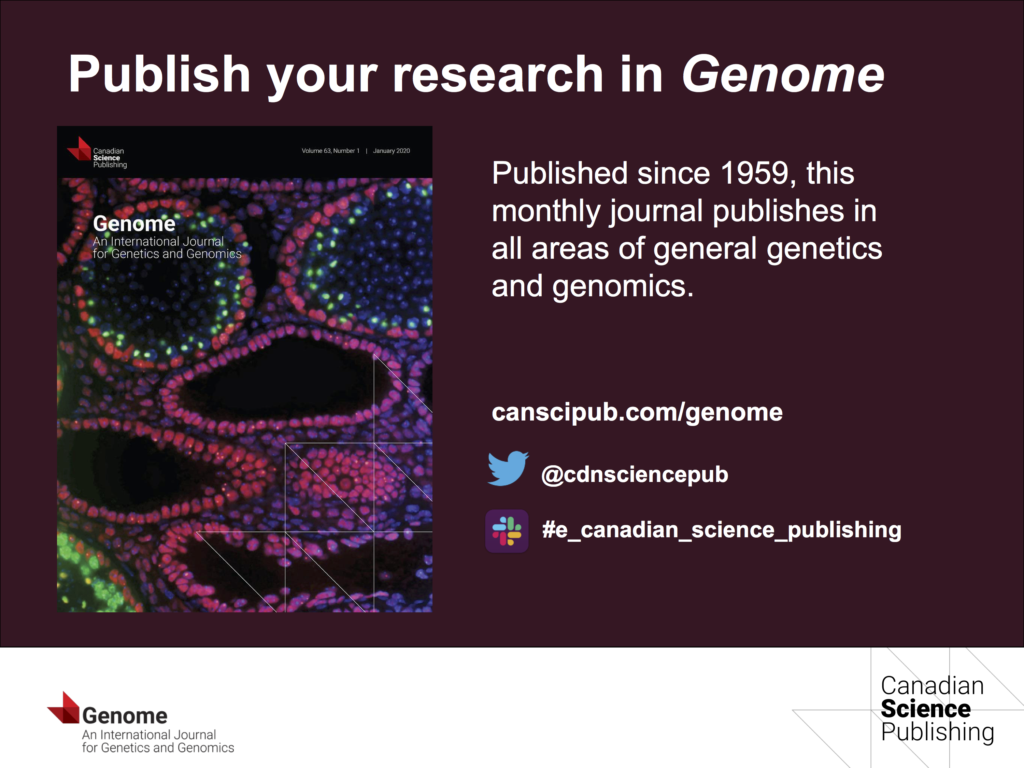Frequently Asked Questions
Inversion polymorphisms suppress recombination across megabase-scale genomic blocks between locally adapted populations of the Atlantic silverside (1028B)
Maria Akopyan1, Arne Jacobs1, Anna Tigano1, Aryn Wilder1, Hannes Baumann2, Nina Therkildsen1
1) Cornell University, Ithaca, NY; 2) Department of Marine Sciences, University of Connecticut, Groton, CT.
Chromosomal inversions are known to play an important role in facilitating adaptation in populations connected by gene flow. By reducing recombination in heterokaryotypes, alternative chromosomal arrangements can capture multiple loci involved in adaptation to contrasting environments. Here, we investigate patterns of structural variability between populations of the Atlantic silverside (Menidia menidia), a marine fish distributed along a steep thermal cline and in which a suite of locally adapted traits has been well documented. Silversides from Georgia and New York, which exhibit local adaptation in growth rates and vertebral number, have a striking pattern of low genome-wide differentiation, punctuated with regions of extreme divergence that span megabases, suggesting the evolution of chromosomal inversions. We conduct comparative linkage mapping and quantitative trait loci (QTL) mapping to characterize the genomic basis and architecture underlying adaptation. We show that loci underlying adaptive traits map to genomic islands of differentiation between populations. Further, we identify eight large inversions on six chromosomes ranging in size from 0.7 to 11.9 megabases, spanning over 4% of the genome. Inverted regions between populations coincide precisely with patterns of genomic divergence and show how recombination is almost entirely suppressed in these regions in inter-population hybrids. We provide the first insights into the magnitude of chromosomal variation in Atlantic silversides and demonstrate the presence and impact of inversion polymorphisms between locally adapted populations. Our findings help clarify the role of inversions in facilitating adaptation in highly connected populations facing divergent selection across a climatic gradient – a selection regime that is ubiquitous in nature and being exacerbated by climate change.
Local adaptation in Populus trichocarpa (1340B)
Hari Chhetri1, Gancho Slavov2, David Macaya-Sanz1, Gerald Tuskan3, Stephen DiFazio1
1) Department of Biology, West Virginia University, Morgantown, West Virginia; 2) Scion, Bay of Plenty, New Zealand; 3) Biosciences Division, Oak Ridge National Laboratory, Oak Ridge, Tennessee.
Because of its rapid growth, hybrid vigor, broad geographic distribution, transformation potential, and the availability of tremendous genetic resources and wide phenotypic variation, Populus is a highly desirable species for biofuel production and other wood products. Understanding the genetic mechanisms underlying local adaptation is key for the sustainable management and domestication of forest trees like Populus. Here we report on the possible mechanisms underlying local adaption in Populus trichocarpa using whole genome re-sequencing, phenotypic and geo-climate data for 869 trees. First, we show that morphological and physiological traits are strongly correlated with the geo-climate variables of the source locations in P. trichocarpa. Second, using Genotype-Environment Association Analysis (GEA) and Redundancy Analysis (RDA) we identified several outlier loci that occur within and near genes related to important plant physiological functions and cuticular wax formation. A total of 32 genes were shared between RDA and GEA methods. Third, using RDA, we decomposed the among population variance of 869 trees into climate and geography. While climate and geography predictors together explained 7.6% of the total variation in the SNP matrix, climate alone explained 2.6% of the total variation. Partitioning the variance components in the response matrix of phenotypic traits into the explanatory matrices of SNPs, climate and geography, explanatory matrices altogether explained 22% of the total variation, whereas SNPs alone explained 3.9% of the total variation. These findings have important implications for developing management and conservation strategies and sustainability of forest resources in the face of climate change.
Inferring the properties of mutational effects on fitness using high-throughput phenotyping (1294A)
Yevgeniy Plavskin1,2, Maria S DeBiase3, Yuan O Zhu4,5, David W Hall6, Dmitri A Petrov4,5, Roland F Schwarz3, Daniel Tranchina1,7, Mark L Siegal1,2
1) Department of Biology, New York University, New York, NY, USA; 2) Center for Genomics and Systems Biology, New York University, New York, NY, USA; 3) Berlin Institute for Medical Systems Biology, Max Delbruck Center for Molecular Medicine, Berlin, Germany; 4) Department of Biology, Stanford University, Stanford, CA, USA; 5) Department of Genetics, Stanford University, Stanford, CA, USA; 6) Department of Genetics, University of Georgia, Athens, GA, USA; 7) Courant Institute for Mathematical Sciences, New York University, New York, NY, USA.
Spontaneous mutations are the source of novel genetic variation in populations, providing the raw material on which selection acts. To shed light on the spectrum of mutations that constitute the starting point of selection and their typical effects on fitness, we estimated the distribution of effect sizes of spontaneous mutations affecting growth in the budding yeast Saccharomyces cerevisiae. We studied mutational effects in a collection of >80 mutation accumulation strains to capture a snapshot of the effects of mutations that have not yet been filtered by selection. Previous work has demonstrated that these strains contain ~300 mutations, primarily single-nucleotide mutations. By combining genotype information with high-precision microcolony-based growth rate measurements from each strain, we are able to infer estimates for the mean mutational effect size, the shape of the mutational effect distribution, and the proportions of mutations with a neutral, positive, and negative effect on growth rate. We find that mutational effects on growth rate are overwhelmingly negative and highly skewed towards very small effect sizes. Interestingly, our modeling suggests that a single distribution of mutational effects does not account well for the observed distribution of growth phenotypes. Rather, growth rate effects of mutations fall into two categories: single-nucleotide substitutions, which on average have larger effects, and frequent, smaller-effect mutations of unknown origin. The estimated high frequency of mutations in the latter category, combined with the fact that they were undetected by conventional sequencing analysis, point to microsatellite mutations as likely candidates underlying the non-single nucleotide mutational effects. We are performing follow-up experiments to directly assay the effects of de novo microsatellite mutations on growth. Our work reveals the spectrum of effect sizes of the mutations on which evolution acts, and points to a likely key role of microsatellite mutations in shaping natural diversity.
The role of phospholipid metabolism in maize adaptation to highlands (973A)
Karla Blöcher-Juárez2, Fausto Rodríguez-Zapata1, 2, Juan Estevez2, Rocio Aguilar-Rangel2, Sergio Pérez-Limón2, Dan Gates3, Li Wang4, Oliver Fiehn3, Jeffrey Ross-Ibarra3, Matthew Hufford4, Ruairidh Sawers1,5, Rubén Rellán-Álvarez1, 2
1) National Laboratory of Genomics for Biodiversity; 2) North Carolina State University ; 3) University of California Davis ; 4) Iowa State University; 5) Pennsylvania State University.
After domestication from lowland teosinte in the warm, humid Mexican southwest maize colonized the highlands of Mexico and South America. In the highlands, maize was exposed to a whole range of environmental factors that differ from the site of domestication, including, among others, lower temperatures, soils with lower phosphorus availability and different biological pressures. In my talk, I will present data supporting the hypothesis that glycerolipid metabolism remodeling was important in the process of maize adaptation to highlands.
We will show results from common garden experiments in Mexican lowland and highland common gardens where we grew maize mapping populations and using quantitative biochemical genetics tools we identified major QTLs that explain the conversion of phosphatidylcholines (PCs) to lyso-phosphatidylcholines (LPCs) leading to a high PC/LPC ratio that is particularly conserved in Mexican highland landraces. We have identified a couple of genes (ZmPla1.2 and ZmLpcat1) that code for enzymes controlling the PCs/LPCs ratio as the most likely causative genes of the PC/LPC conversion QTLs.
We then used GBS data from 3200 maize landraces and whole genome sequences from another 30 landraces across the Americas and identified SNPs within the coding regions of ZmPla1.2 and ZmLpcat1 that show clear signs of selection to highlands. Other genes controlling PCs/LPCs ratio were also found to be under selection in highland maize.



